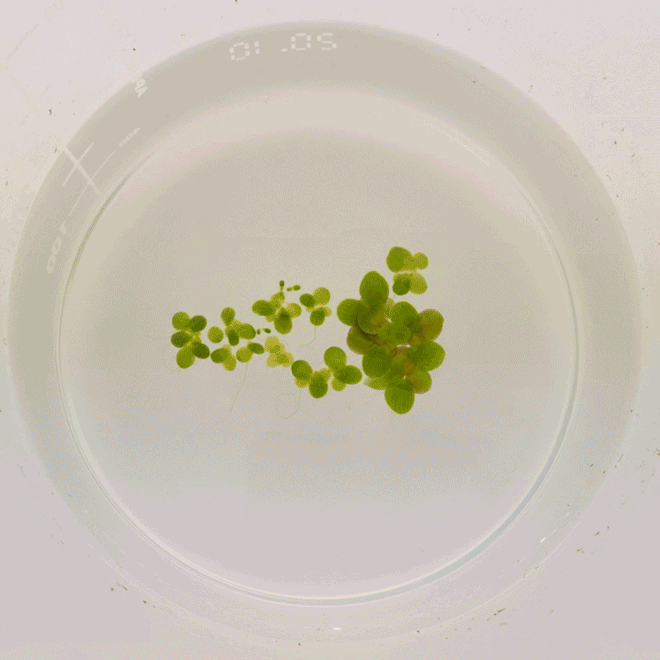A new study, genome sequences for five duckweed species, reveals how duckweed can essentially farm itself, and because it can double in mass after two days what that might mean for the future of food science.
Thanks to genetics, duckweed can grow in everything from wastewater to swamps. It even benefits from more CO2. The work revealed that what makes the plant work so well are genes that are missing and are therefore responsible for features of the plant, like open stomata and the lack of roots. Stomata, pores on the surface of plants, help take in carbon dioxide and release oxygen. Open stomata allow for greater intake, making them good carbon capture technology. Likewise, the lack of roots in some species makes it easier for duckweed to thrive in any watery environment.

Time lapse graphic showing how duckweed grows in width rather than height. Credit: Cristian Mateo Elizalde and Evan Ernst/Martienssen lab
Add to that is the finding that some traits promote high protein production, which means it could be used for food, while other traits enhance starch accumulation, making it suitable for biofuels. production.
Duckweed agriculture is still a new concept, only a handful of businesses are exploring it as a basic research initiative, but academics producing more genomes will give the efforts of the private sector a boost.





Comments